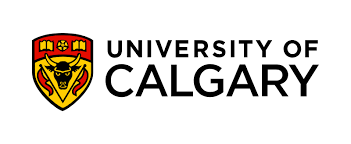Harvard University acceptance rate for admission
Getting into Harvard is about as likely as accidentally discovering a winning lottery ticket while walking your pet unicorn. With an acceptance rate of 3.19%, Harvard rejects over 96% of applicants, making even the most qualified high school seniors and transfer students feel like they have a better chance of getting struck by lightning twice, on the same day. The good news is that if you do manage to defy the odds and receive that coveted thick envelope, you’ll get to experience what it’s like to be part of the academic elite, rubbing shoulders with future presidents, Nobel laureates, and eccentric technology billionaires in training.
Well I just hope you don’t lose your mind dealing with all that stress, competition, and crippling self-doubt. But no pressure!
In this article am going to give you all the information you need to know not only about the acceptance rate of this citadel of knowledge but also an indepth information as regards to admission process, application dates and deadlines. I will urge you to read to the end,. Now let’s get an insight about the Harvard University.
Overview of Harvard University
Founded in 1636, Harvard University is the oldest institution of higher education in the United States. Located in Cambridge, Massachusetts, Harvard is made up of 13 schools and institutes, including the prestigious Harvard Medical School, Harvard Law School, Harvard Business School, and the Harvard John A. Paulson School of Engineering and Applied Sciences.
With an acceptance rate of only around 5%, Harvard is one of the most selective universities in the world. It has produced 8 U.S. presidents, over 150 Nobel laureates, and hundreds of Rhodes Scholars. Notable alumni include John F. Kennedy, Natalie Portman, Bill Gates, and Mark Zuckerberg.
Harvard’s 2,400 faculty members serve over 20,000 students, nearly evenly split between undergraduate and graduate students. Undergraduates pursue concentrations (majors) ranging from Africana Studies to Statistics, while graduate students work toward master’s and doctoral degrees.
The university manages an endowment of over $50 billion, the largest of any academic institution. Harvard’s libraries hold the largest academic collection in the world, with over 20 million volumes. Its museums house invaluable collections of art, cultural artifacts, scientific specimens, and historical documents.
With its long history, prestigious reputation, abundant resources, and distinguished community of scholars, Harvard remains one of the most eminent and competitive universities in the world. Its alumni continue to shape society across diverse fields and endeavors.
Comparison of Harvard University acceptance rate over the years
However, here are some general details about Harvard’s recent acceptance rates:
- For the class entering in 2023, Harvard accepted 3.19% of applicants. This was a record low acceptance rate for Harvard.
- In 2022, Harvard accepted 3.19% of applicants, tied for the lowest rate in its history.
- In 2021, Harvard accepted 3.43% of applicants.
- -In 2020, Harvard accepted 4.92% of applicants.
- In 2019, Harvard accepted 4.5% of applicants.
The acceptance rate at Harvard varies from year to year based on the number and qualifications of applicants in the pool. But in general, Harvard has had extremely competitive admission in recent years, admitting only a very small percentage of applicants. The class entering in 2024 will likely have a very low single-digit acceptance rate as well. Exact numbers are usually not released until after admission decisions are announced.
Also it may interest one to know that Harvard University has some kind of different in acceptance rate for students outside the United States of America
Here let’s talk about
Harvard University acceptance rate for International students.
- For the class entering in 2023, Harvard accepted 3.19% of applicants. This was a record low acceptance rate for Harvard.
- In 2022, Harvard accepted 3.19% of applicants, tied for the lowest rate in its history.
- In 2021, Harvard accepted 3.43% of applicants.
- In 2020, Harvard accepted 4.92% of applicants.
- In 2019, Harvard accepted 4.5% of applicants.
The acceptance rate at Harvard varies from year to year based on the number and qualifications of applicants in the pool. But in general, Harvard has had extremely competitive admission in recent years, admitting only a very small percentage of applicants. The class entering in 2024 will likely have a very low single-digit acceptance rate as well. Exact numbers are usually not released until after admission decisions are announced.
Harvard University admissions requirements
To get into Harvard University, you need top-notch high school grades, high SAT/ACT scores, and glowing recommendations from teachers and counselors. Active involvement in extracurricular activities and leadership roles is crucial. Your personal essays and interviews should showcase your personality, interests, and goals. Harvard also values diverse experiences, accomplishments, and perspectives, aiming for a well-rounded student body that embodies academic excellence, leadership, and personal qualities like integrity and determination.
Harvard University admissions process
Here are some key points about the Harvard University admissions process:
- Harvard is one of the most selective universities in the world, with an acceptance rate typically around 5%. For the class of 2027 entering in Fall 2023, Harvard received over 57,000 applications and admitted just 1,980 students.
- Harvard evaluates applicants on their academic achievements, extracurricular activities, personal qualities and talents, and other factors. Strong grades and test scores are important but not sufficient for admission.
- Applicants need to have taken challenging high school courses and received excellent grades. The middle 50% SAT score range for admitted students is 1460-1580 and the middle 50% ACT score range is 33-35.
- Harvard recommends at least 4 academic courses each year in high school, including English, math, science, foreign language, and social studies. Competitive applicants take numerous honors, AP, or IB courses.
- Extracurricular activities, athletics, community service, jobs, and other pursuits outside academics are evaluated. Harvard seeks passionate, engaged students who will contribute to the campus community.
- The admissions essay, teacher recommendations, and interviews allow applicants to demonstrate their personality, interests, and background. Harvard seeks a diverse class across many dimensions.
- Admission to Harvard is needs-blind – a student’s ability to pay does not affect admission chances. Over 20% of students receive need-based financial aid.
- Admission is highly competitive. Even applicants with perfect GPAs and test scores get rejected each year. Luck and the overall strength of the applicant pool also play a role.
Here are some key details about applying to Harvard University.
- Other required materials include high school transcript, SAT or ACT scores, teacher recommendation letters, a counselor recommendation letter, and the application fee.
- Applicants must choose one of Harvard’s schools to apply to, such as the Faculty of Arts and Sciences or School of Engineering.
Application Guidance for Harvard University
- Harvard provides tips on how to best fill out each section, within their official guide and website.
- The personal and supplemental essays should showcase the applicant’s unique story, passions, and intellectual curiosity.
- Teacher and counselor letters should highlight academic abilities, character, and potential.
- Harvard interviews provide another way to share your interests and qualifications.
With holistic review, Harvard seeks to build a well-rounded, diverse freshman class. The application is a chance to convey the applicant’s best qualities and fit.
Application Timeline for Harvard University
- Early Action deadline is November 1st, with decisions in mid-February.
- Restrictive Early Action deadline is November 1st, with mid-December decisions.
- Regular Decision deadline is January 1st, with decisions by April 1st.
- Accepted students have until May 1st to commit by submitting their enrollment deposit.
Harvard University early entry.
Harvard offers two early admission programs – Restrictive Early Action (REA) which is binding and Early Action (EA) which is non-binding. REA has an application deadline of November 1st and admissions decisions are released in mid-December. EA also has a November 1st deadline with decisions in mid-February. The early admission acceptance rate is slightly higher than regular decision but still extremely competitive at under 10% for both. Applicants must have outstanding academics to be competitive including SAT scores of 1500+ or ACT 34+. Early programs allow interested students to potentially gain admission early but do not dramatically increase chances, as many deferred students are accepted in the regular round. If admitted REA, students must attend Harvard and withdraw other applications but EA admits can wait until the May 1st regular reply date. Harvard restricts applying early to both Harvard and other private colleges. Overall, early admission provides top applicants an opportunity to potentially gain early entrance but regular decision is still a viable option for most candidates.
Harvard University Portal for admission.
– The portal website is;
https://college.harvard.edu/admissions/apply
- This is where students can access the application, check application status, submit required materials, and manage their admission account.
- -To start an application, students need to create an account with a username and password. This allows them to work on the application over time before submitting.
- The portal has separate logins for first-year undergraduate applicants vs transfer/visiting students. Accounts are specific to the admission cycle.
- Through the portal, students can submit items like transcripts, test scores, recommendations, essays, and supplementary materials.
- Application status can be tracked to see if documents have been received and the application is complete.
- Admission decisions are posted on the portal when they are released. Students find out if they are admitted, denied, or deferred.
- Accepted students can accept their offer of admission and pay the enrollment deposit through the portal to confirm their spot.
- The portal provides guidance on next steps after admission decisions, like financial aid, housing, class registration, etc.
- Technical help and customer support is available for any issues with the portal or application process.
The online admission portal streamlines the application process from start to finish for Harvard applicants. It serves as a central hub for submitting and tracking application material.
Conclusion
Getting into Harvard is no easy feat. With an acceptance rate that hovers around 5%, they turn away far more students than they accept. The truth is, you can have perfect grades, test scores, and glowing recommendations, but still not receive an offer of admission. The competition is intense, with Harvard receiving over 40,000 applications per year for around 2,000 spots. As much as academics matter, the admissions officers are also looking for something that makes you stand out – a unique passion, perspective, or talent. In many ways, getting into Harvard comes down to luck – will the particular admissions officer reading your application see you as a good fit for the incoming class? With odds like this, students should be proud if they are admitted, but not devastated if they are not. Rejection from Harvard does not define you. Focus on finding the college that fits you best, and you’ll still thrive!






